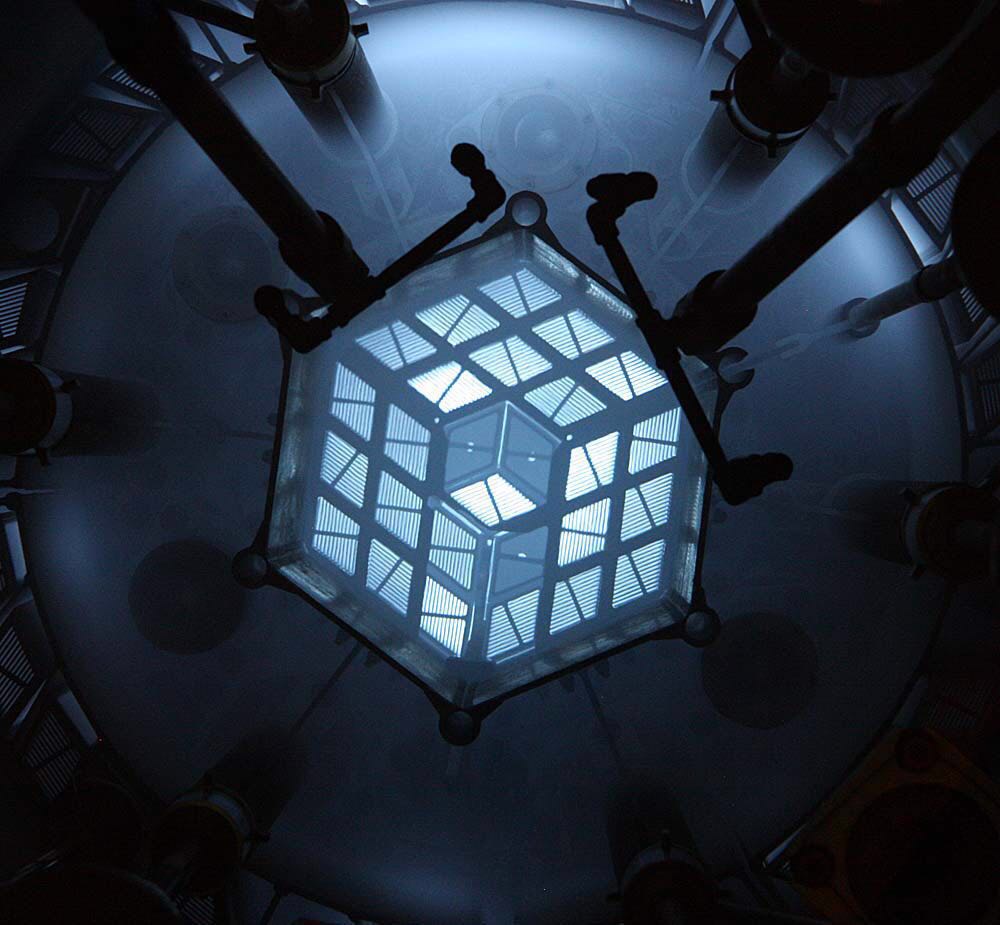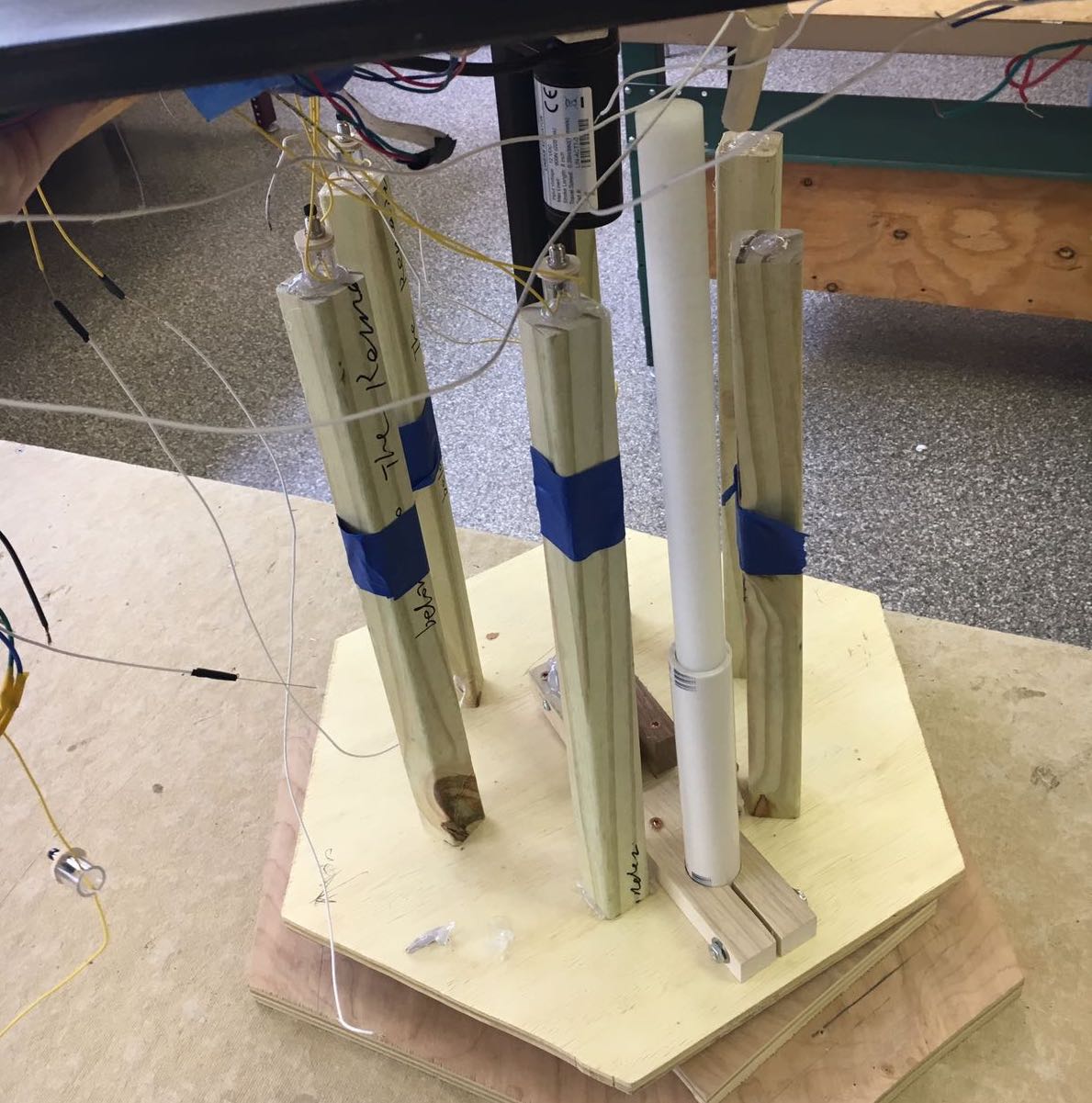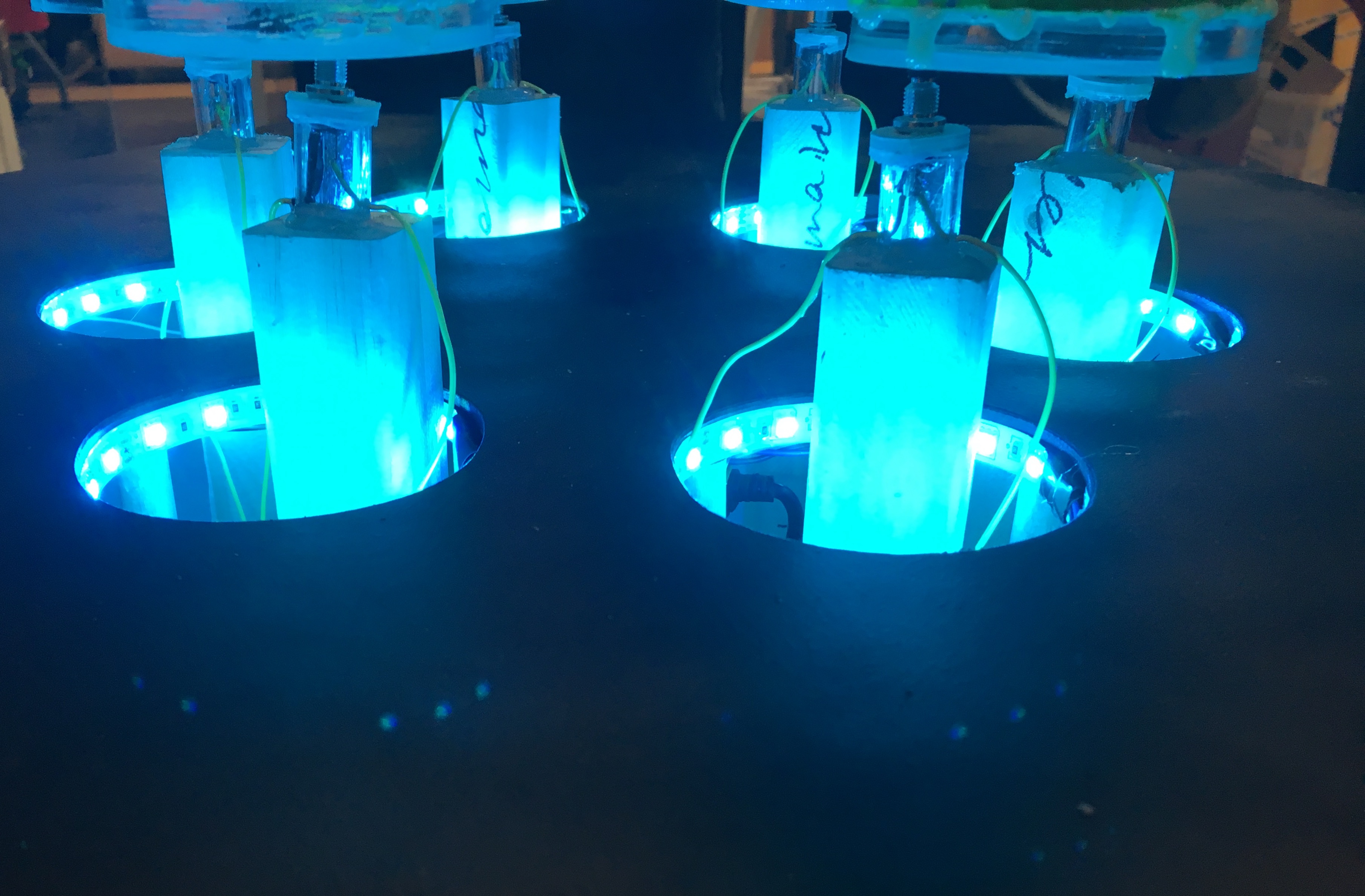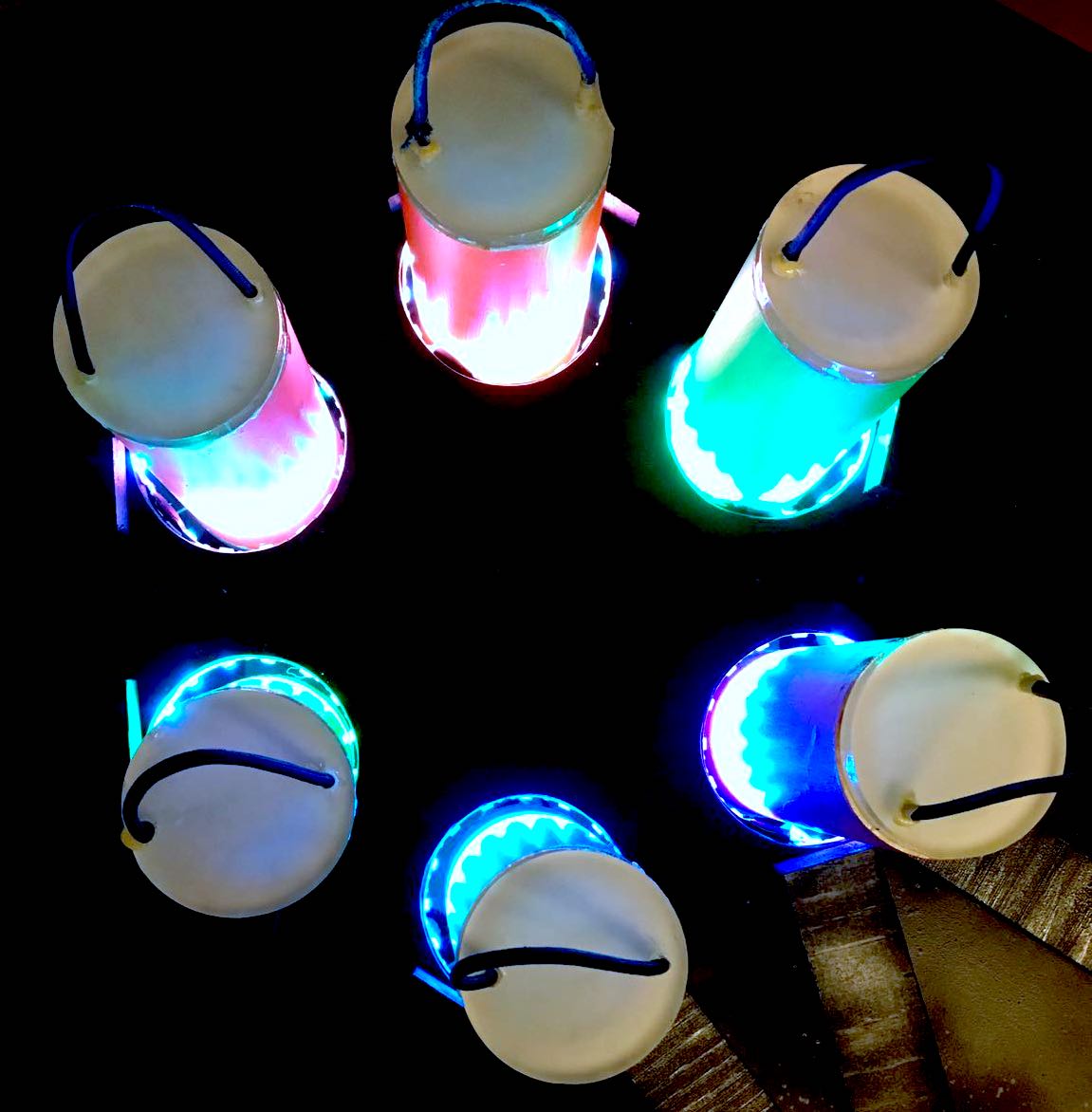
Our inspiration for the nuclear core comes straight from MIT! The MIT facility, pictured on the right, has a very futuristic, tron-like appearance that we strived to incorporate in our prototype. The first aspect that we took as inspiration is the hexagonal profile featured in the facility. The second one is the bright blue color--we used LEDs in our nuclear core model to incorporate this aspect.

The inside of the core lies our self-reset mechanism. As it stands, to self reset an electric linear actuator is triggered, pulling the "push plate" up, which in turn pushes all of the control rods out of their slots and onto the ground for the next group. This worked, however there are two main issues with the current setup:
The first issue is the positioning of the control rod slots--they are too close to the center. Because they are too close, when the rods are ejected they just stay on the top of the nuclear core. This is not ideal. In future iterations we suggest putting the control rod slots towards the outside of the hexagon, rather than the inside.
The second main issue of the self-reset mechanism is the time. Electric linear actuators are very slow--so in the future we would suggest pneumatic. With a pneumatic system you reduce the risk of the control rods landing on the top of the core because youre able to eject them much quicker. Also you could set up one pneumatic piston per slot, so as to add a level of randomness/make it easier by not ejecting all of the control rods for each reset.

The most prominent aspect of the nuclear core is the futuristic hexagonal footprint. Its inner wall sizes are one foot each, and the height is two feet--so when its all together it leaves a large footprint. Because of the enormity of the nuclear core, the control rods get hidden depending on where they fall. This adds another layer of complexity to the game, causing the players to move around the crane cube and get different perspectives in order to effectively get the control rods off the ground.
Another important aesthetic point of the nuclear core is the addition of button-triggered LEDs. The LEDs serve to indicate when a contro rod has been properly placed into a slot. This functionality comes from momentary buttons placed on top of each of the push rods on top of the push plate. The buttons separate the input voltage from the arduino from getting to the LED strips. Then, when one of the buttons is pushed, that ring of LEDs lights up. The rest of the circuit consists of three N-Channel MOSFETs--one for red, one for blue, and one for green. The gate of each MOSFET is connected to their respective digital output pins on the arduino. The drain of each MOSFET connects to the respective color on each LED strip (in parallel), and the source connects to the ground.
One of the main changes we would make to the LED circuit design is by adding logic to the button aspect of the circuit. Right now, the buttons just serve to open and close the input voltage connection--so they are off and then turn on when the control rod is in place. In the future, we would want the LEDs to be on all the time, swtitching color or to a pattern of colors when the control rods are in place. If this cant be achieved with buttons, then our reccomendation is to rethink this part of the circuit--possibly adding a proximity sensor or RFID.

